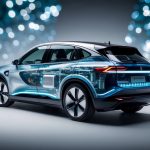Understanding Hybrid Vehicles
Hybrid vehicles combine a traditional internal combustion engine with an electric motor and battery. They are designed to improve fuel efficiency and reduce emissions.
How Hybrid Vehicles Work
Hybrid vehicles operate by utilizing both an internal combustion engine and an electric motor. The electric motor can power the car independently at lower speeds or work in conjunction with the engine during acceleration. This system harnesses energy that would otherwise be lost, such as during braking, and stores it in the battery.
A hybrid’s battery is recharged through regenerative braking and, in some cases, by the engine itself. This process helps improve overall energy efficiency. The transition between using the electric motor and the engine is seamless, ensuring a smooth driving experience.
Many hybrids offer multiple driving modes. These can include full electric, combined power, or engine-only modes, allowing for flexibility based on driving conditions and terrain.
Different Types of Hybrid Cars
There are several types of hybrid cars, each with unique features. Parallel hybrids use the electric motor and engine together to drive the wheels. This configuration is the most common and offers balanced performance and efficiency.
Series hybrids rely solely on the electric motor to drive the wheels, with the engine acting as a generator to recharge the battery. This type ensures quiet and efficient city driving but may rely more on the engine for longer journeys.
Plug-in hybrids (PHEVs) have larger batteries that can be recharged from an external power source. This allows them to travel longer distances on electric power alone, reducing fuel consumption significantly for short commutes and city driving.
Understanding Electric Vehicles

Electric vehicles (EVs) are gaining popularity due to their environmental benefits and advancements in battery technology. These vehicles operate differently from traditional combustion engine cars, relying purely on electricity stored in batteries.
How Electric Vehicles Work
Electric vehicles use electric motors instead of internal combustion engines. An EV’s power comes from a battery pack, which provides electricity to the motor. This motor then converts the electrical energy into mechanical energy to drive the vehicle. Regenerative braking systems allow EVs to recover energy during braking, storing it back in the battery.
Charging is a key aspect, with EVs typically using either Level 1, Level 2, or DC fast chargers. Level 1 chargers operate on standard household outlets, while Level 2 chargers require a 240-volt outlet, providing faster charging. DC fast chargers offer rapid charging for longer trips.
Advancements in Battery Technology
Recent developments in battery technology have significantly extended the range and efficiency of electric vehicles. Lithium-ion batteries are the most common, providing a balance between energy density, lifespan, and cost. Solid-state batteries are emerging as a promising technology, potentially offering higher energy densities and improved safety.
Battery management systems (BMS) have also advanced. These systems monitor and protect the battery, optimizing performance and longevity. Fast charging capabilities have improved, with some new EV models now capable of adding hundreds of miles of range in just 20-30 minutes.
Enhanced battery recycling methods are being developed, aimed at reducing waste and reusing materials from old batteries. This contributes to the overall sustainability of electric vehicles. Battery advancements continue to drive the EV market forward, making them more convenient and even cost-effective in the long run.



